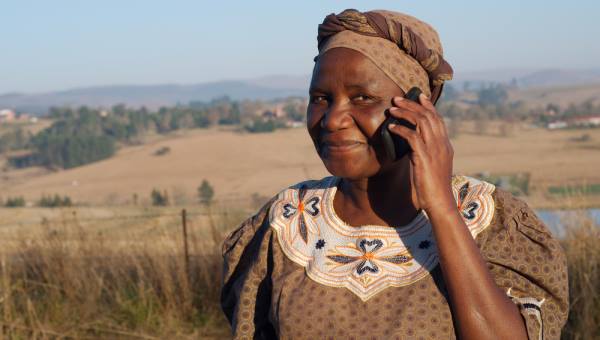85% mobile subscription penetration in Sub-Saharan Africa
85% mobile subscription penetration in Sub-Saharan Africa

A market dominated by youth, more affordable smartphones, growth in cellular Internet of Things (IoT) connections is driving the growth in mobile subscription penetration rates (in reference to all connected mobile devices) in Sub-Saharan Africa.
This is according to the Ericsson 2016 Global Mobility Report announced at this year's AfricaCom hosted in Cape Town.
Research by the firm suggests that there were 84 million new mobile subscriptions globally in Q3 2016, with 15m added in Africa. By the end of 2016, there will be 3.9 billion smartphone subscriptions globally.
The continent has a subscription penetration (percent of population) of 82%, but this figure is expected to reach 100% by 2021 and 105% by 2022, with over 1 billion mobile subscriptions.
"This makes Sub-Saharan Africa, the region with highest growth rate in mobile subscriptions globally," Ericsson has said.
The company has emphasised IoT adoption and application in various sectors, including water system management and irrigation in Kenya's agricultural sector, as evidence of increasing growth.
Across sub-Saharan Africa, the report projects cellular IoT connections growing from 11 million in 2016 to 75 million connections in 2022.
The Report projects that by 2022 the number of smartphone subscriptions is forecast to reach 6.8 billion, with more than 95% of the subscriptions registered on WCDMA/HSPA, LTE and 5G networks.
In Sub-Saharan Africa smartphones penetration will reach around 80 percent by 2022 while mobile subscriptions on smartphones will rise by 21 percent annually from 2016 to 2022.
Mobile data traffic continues to grow, driven both by increased smartphone subscriptions and a continued increase in average data volume per subscription, fuelled primarily by more viewing of video content. In Q3 2016, data traffic grew around 10% quarter-on-quarter and 50% year-on-year.
"A rise in access and viewing of video content is also a driver for mobile data traffic growth in Sub-Saharan Africa. Other drivers are wider network coverage, continued reduction in prices of both devices and services and a growing population with 57% of the current population under 15 years old," the report states.
Jean-Claude Geha, President of Ericsson Sub-Saharan Africa says: "Data traffic is forecast to grow by around 55 percent annually between 2016 and 2022 , that is a 13 times growth. This rapid growth is driving operators to explore methods of optimizing network capacity, one of which is complementing traffic via Wi-Fi networks – with traffic expected to rise 70% annually between 2016 and 2022."
Geha added that the company is focused on helping foster collaboration in its ecosystem, with specific attention to working with device manufacturers to make devices more affordable (below US$50), with operators to focus on end-user experience and with OTT service providers to add platforms and encourage competition on value.
